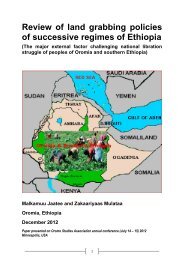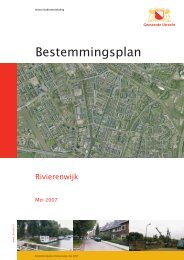freakonomics
freakonomics
freakonomics
Create successful ePaper yourself
Turn your PDF publications into a flip-book with our unique Google optimized e-Paper software.
cooking off the liquid, produced tiny rocks of smokeable cocaine. It came to be called<br />
crack for the crackling sound the baking soda made when it was burned. More<br />
affectionate nicknames would soon follow: Rock, Kryptonite, Kibbles ’n Bits, Scrabble,<br />
and Love. By the early 1980s, the class drug was ready for the masses. Now only two<br />
things were needed to turn crack into a phenomenon: an abundant supply of raw cocaine<br />
and a way to get the new product to a mass market.<br />
The cocaine was easy to come by, for the invention of crack coincided with a Colombian<br />
cocaine glut. During the late 1970s, the wholesale price of cocaine in the United States<br />
fell dramatically, even as its purity was rising. One man, a Nicaraguan émigré named<br />
Oscar Danilo Blandon, was suspected of importing far more Colombian cocaine than<br />
anyone else. Blandon did so much business with the budding crack dealers of South<br />
Central Los Angeles that he came to be known as the Johnny Appleseed of Crack.<br />
Blandon would later claim that he was selling the cocaine to raise money for the CIAsponsored<br />
Contras back home in Nicaragua. He liked to say that the CIA was in turn<br />
watching his back in the United States, allowing him to sell cocaine with impunity. This<br />
claim would spark a belief that still seethes to this day, especially among urban blacks,<br />
that the CIA itself was the chief sponsor of the American crack trade.<br />
Verifying that claim is beyond the purview of this book. What is demonstrably true is that<br />
Oscar Danilo Blandon helped establish a link—between Colombian cocaine cartels and<br />
inner-city crack merchants—that would alter American history. By putting massive<br />
amounts of cocaine into the hands of street gangs, Blandon and others like him gave rise<br />
to a devastating crack boom. And gangs like the Black Gangster Disciple Nation were<br />
given new reason to exist.<br />
As long as there have been cities, there have been gangs of one sort or another. In the<br />
United States, gangs have traditionally been a sort of halfway house for recent<br />
immigrants. In the 1920s, Chicago alone had more than 1,300 street gangs, catering to<br />
every ethnic, political, and criminal leaning imaginable. As a rule, gangs would prove<br />
much better at making mayhem than money. Some fancied themselves commercial<br />
enterprises, and a few—the Mafia, most notably—actually did make money (at least for<br />
the higher-ups). But most gangsters were, as the cliché assures us, two-bit gangsters.<br />
Black street gangs in particular flourished in Chicago, with membership in the tens of<br />
thousands by the 1970s. They constituted the sort of criminals, petty and otherwise, who<br />
sucked the life out of urban areas. Part of the problem was that these criminals never<br />
seemed to get locked up. The 1960s and 1970s were, in retrospect, a great time to be a<br />
street criminal in most American cities. The likelihood of punishment was so low—this<br />
was the heyday of a liberal justice system and the criminals’ rights movement—that it<br />
simply didn’t cost very much to commit a crime.<br />
By the 1980s, however, the courts had begun to radically reverse that trend. Criminals’<br />
rights were curtailed and stricter sentencing guidelines put in place. More and more of<br />
Chicago’s black gangsters were getting sent to federal prisons. By happy coincidence,<br />
some of their fellow inmates were Mexican gang members with close ties to Colombian









